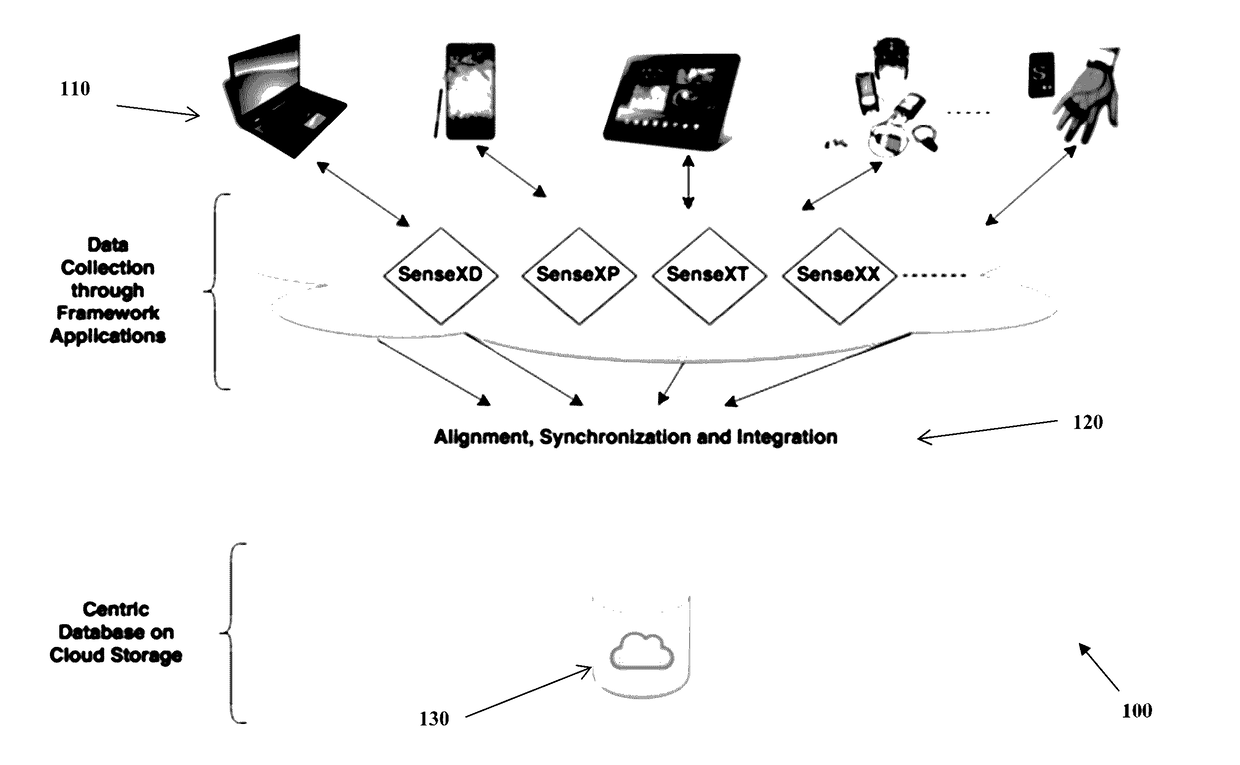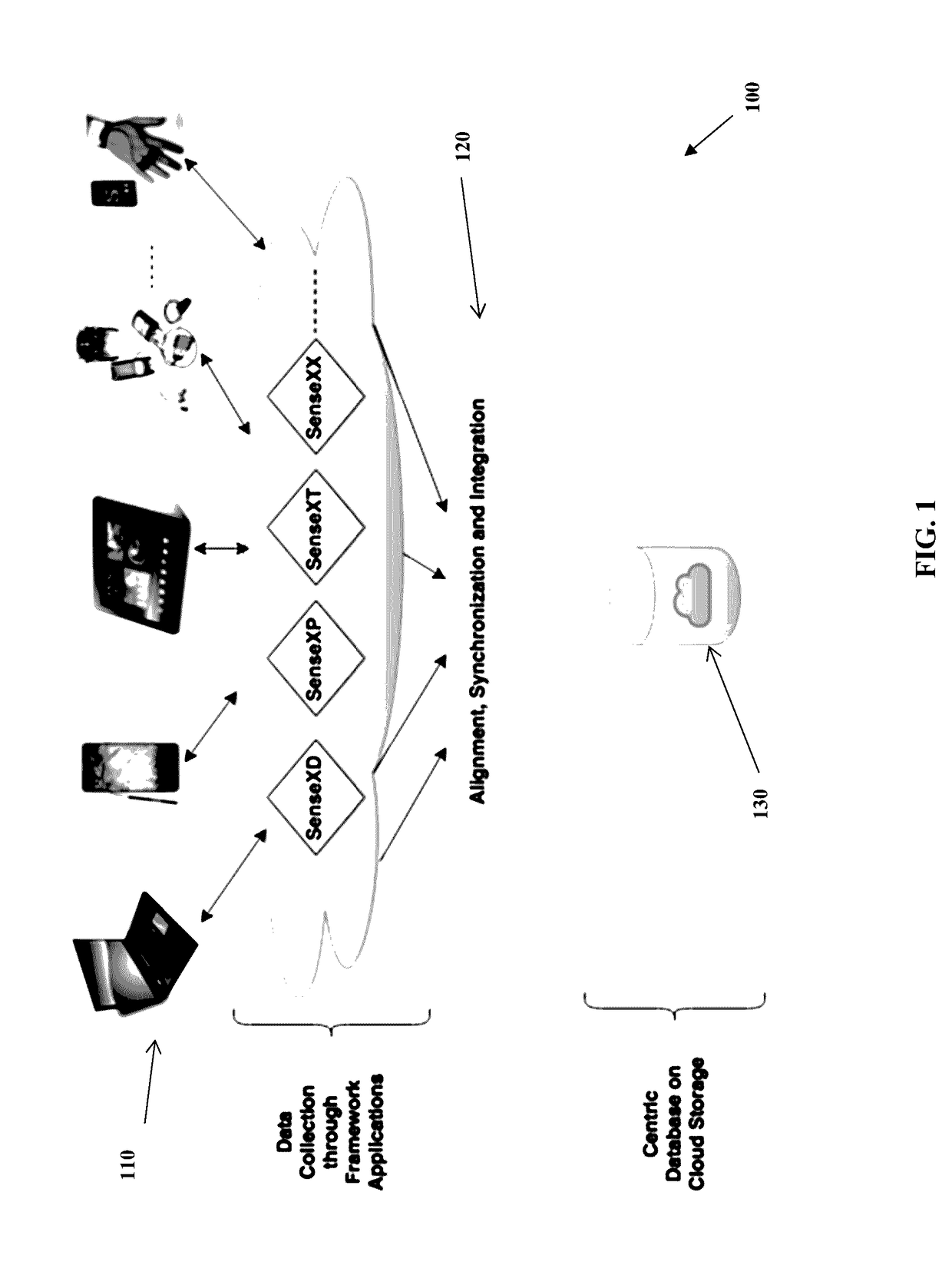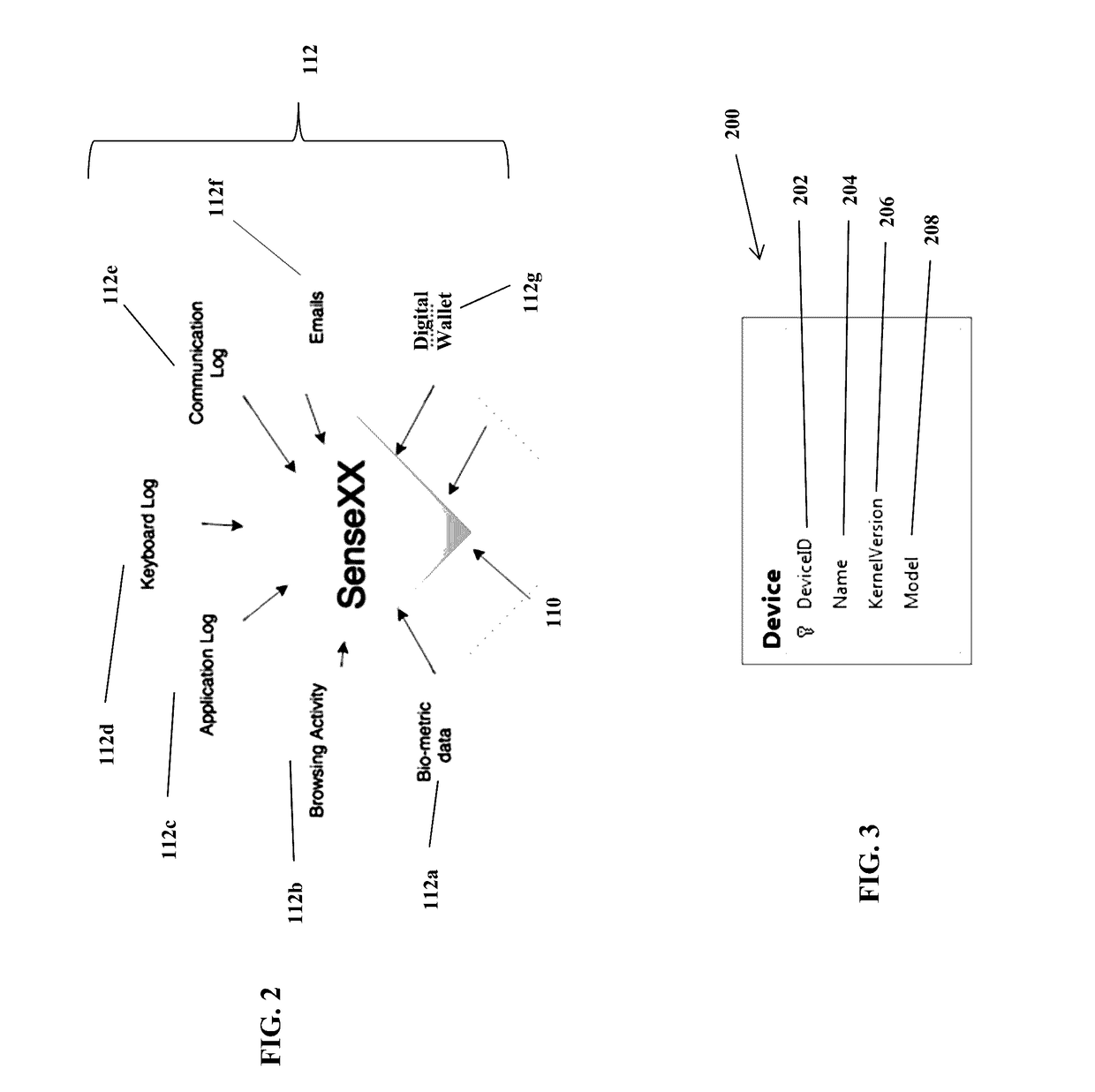System and method for multi-device continuum and seamless sensing platform for context aware analytics
a technology of context awareness and sensing platform, applied in the field of sensing devices and applications, can solve the problems of limited sensing system, no integration, and no data analytics s
- Summary
- Abstract
- Description
- Claims
- Application Information
AI Technical Summary
Benefits of technology
Problems solved by technology
Method used
Image
Examples
example 1
ata Records Collected at Different Scheduling Time Intervals
[0109]Let the table with more frequent feature measurements be considered as the reference table and the less frequent data table be the secondary table.
[0110]For each table of less frequent data records collected, create a time synchronization table with two columns representing the matching timestamps between the reference table (most frequent data) and the other table (with less frequent time stamps).
[0111]Populate the first column of the synchronization table with all the timestamps from the reference table.
[0112]For every timestamp in the first column, select a timestamp from the secondary table (with less frequent time stamps), where the absolute difference between the two timestamps is the least. This approach uses One Nearest Neighbor (1-NN) algorithm for matching.
[0113]After obtaining a complete time synchronization table, the complete time synchronization table is joined with the table with frequent records and wi...
example 2
cheduled Data with Adhoc User Collected Data
[0115]The user-dependent ad hoc data tables collect the time stamps when each record is added and how much time was spent in the corresponding event or active application.
[0116]The table with regularly most frequent scheduled data collection is chosen as the reference table.
[0117]For every record in the reference table, select the record from the user-dependent table where the timestamp from the reference table falls in the time range of the record along with its active time window i.e. secondary timestamp<reference timestamp<(secondary timestamp+active duration).
[0118]An example of the mentioned procedure is shown in FIG. 7 which represents joining an accelerometer table (scheduled feature) and an active application table (user dependent feature):
[0119]FIG. 7 is a query joining accelerometer and active application records.
[0120]The scheduled table is used as the reference table to avoid any loss of data records. For every record in the re...
example 3
Recognition Model
[0121]To illustrate the time synchronization, an Activity Recognition Model 300 is shown in FIG. 8. The Activity table 300 comprises the physical activity 310 and Accelerometer Raw Data 320 and the Magnetometer Raw Data 350 of the user is joined with the Time Granularity table 320 along with the Connectivity Status 340 all the needed features to create the required training data for building an activity recognition model. The Accelerometer Raw Data 320 may include the Accelerometer Statistics 332 and the Magnetometer Raw Data 350 may include the Magnetometer Statistics 352. In one embodiment, the Activity table 300 is filled by the user through a survey scheduled at the user's own choice. In one embodiment, the Active Application 312 table is joined with the Time Granularity 320.
[0122]Location-Based Synchronization and Alignment of Data Records:
[0123]The database is populated with records of the collected features in separate tables and with different geographical o...
PUM
 Login to View More
Login to View More Abstract
Description
Claims
Application Information
 Login to View More
Login to View More - R&D
- Intellectual Property
- Life Sciences
- Materials
- Tech Scout
- Unparalleled Data Quality
- Higher Quality Content
- 60% Fewer Hallucinations
Browse by: Latest US Patents, China's latest patents, Technical Efficacy Thesaurus, Application Domain, Technology Topic, Popular Technical Reports.
© 2025 PatSnap. All rights reserved.Legal|Privacy policy|Modern Slavery Act Transparency Statement|Sitemap|About US| Contact US: help@patsnap.com



